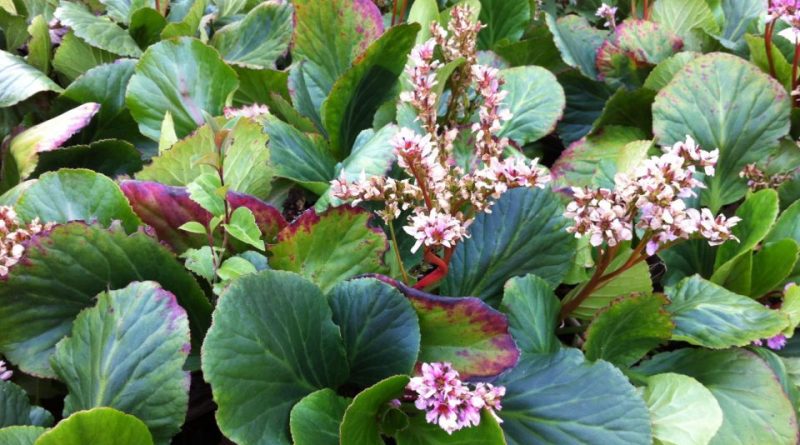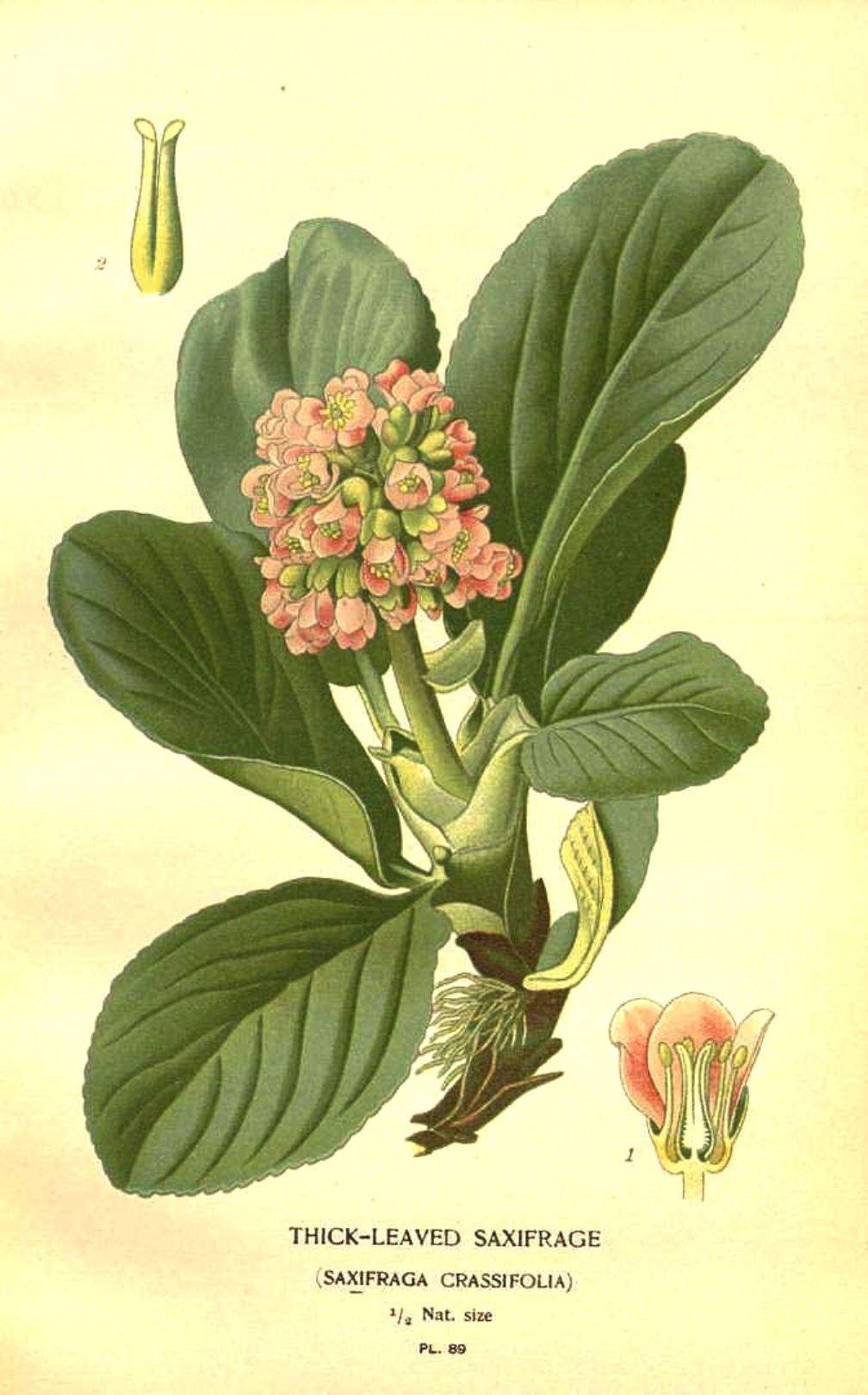Bergenia crassifolia
Bergenia crassifolia
The heart-leaved bergenia (Bergenia crassifolia (L.) Fritsch) is a herbaceous species belonging to the Saxifragaceae family.
Systematic –
From a systematic point of view, it belongs to the Eukaryota Domain, Plantae Kingdom, Magnoliophyta Division, Magnoliopsida Class, Saxifragales Order, Saxifragaceae Family and therefore to the Genus Bergenia and the Species B. crassifolia.
The termibe is synonymous:
– Saxifraga crassifolia L.
Etymology –
The term Bergenia of the genus was dedicated to the German botanist Karl August von Bergen (1704-1759).
The specific epithet crassifolia comes from thick, thick crassus and folium leaf: with thick, fat leaves.
Geographical Distribution and Habitat –
Bergenia crassifolia is a plant native to the Asian continent, and in particular to Siberia, which has now become spontaneous in other parts of the world.
Its habitat is somewhat varied as it is an indifferent species to the substrate and where it can also grow in areas adjacent to population centers or in semi-ruderal environments.
Description –
Bergenia crassifolia is a perennial, broad-leaved and evergreen herbaceous plant that can reach a maximum height of 30 cm.
The roots are rhizomatous and moderately vigorous, with the tendency to develop very horizontally.
The leaves are large, shiny green and round in shape.
The inflorescences are panicle with many white, pink, purple, red flowers. The antesis occurs towards the end of the winter period, continuing for part of the spring period.
Cultivation –
The heart-leaved bergenia, as mentioned, is a plant that can be grown in any type of soil, as long as it is well drained.
Even the exposure is indifferent as it adapts to any exposure (sun, shade, half shade).
It also bears well both very cold and very hot temperatures.
The plant requires, however, abundant watering: it is necessary to keep the soil always moist, avoiding stagnation. Watering can be reduced in winter during the vegetative rest period.
As for the pruning technique, it does not require it but it is advisable to remove the withered flowers to prolong their flowering.
If cultivated in pots, during the vegetative period it must be fertilized every 15-20 days with fertilizer for flowering plants. If grown in the open field it is good to make organic fertilizer at the end of the winter period, burying it at the base of the plant.
Finally propagation: this must be carried out in March (or September in mild climates) when it is possible to divide the tufts while maintaining vigorous roots on each.
Uses and Traditions –
The heart-leaved bergenia is a plant that has a very early flowering, at the end of winter, even if tradition has it that it blooms around March 19 from which it also takes the name of the flower of San Giuseppe. other names are: heartleaf bergenia, leather bergenia, winter-blooming bergenia, elephant-ears, elephant’s ears, Korean elephant-ear, badan, pigsqueak, Siberian tea, Mongolian tea.
Bergenia crassifolia was once used as an ornament in gardens, but in recent decades it has been almost forgotten. There are a number of ornamental cultivars of various colors.
This plant is used for flower beds, rocks and as ground cover.
Bergenia crassifolia as well as as an ornamental plant can be used for its medicinal properties. In Mongolia it was used to make a tea, Chagirski. To prepare it, black (dead) leaves were harvested at the end of winter.
Its leaves have antioxidant properties.
Preparation method –
Bergenia crassifolia, as mentioned, can be used to prepare a tea, Chagirski, obtained by collecting the now black leaves at the end of winter.
Guido Bissanti
Sources
– Acta Plantarum – Flora of the Italian Regions.
– Wikipedia, the free encyclopedia.
– Treben M., 2000. Health from the Lord’s Pharmacy, Tips and experiences with medicinal herbs, Ennsthaler Editore
– Pignatti S., 1982. Flora of Italy, Edagricole, Bologna.
– Conti F., Abbate G., Alessandrini A., Blasi C. (edited by), 2005. An annotated checklist of the Italian vascular flora, Palombi Editore.
Warning: Pharmaceutical applications and alimurgical uses are indicated for information purposes only, they do not in any way represent a medical prescription; therefore, no responsibility is accepted for their use for healing, aesthetic or food purposes.


